6. Air Force One (1997)
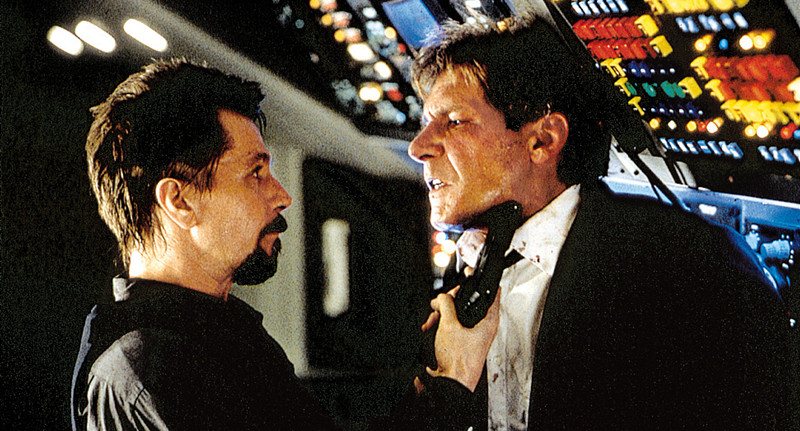
The political action thriller “Air Force One,” directed by Wolfgang Peterson, succeeds most where its star power coalesces and shines brightly through the scenes. Oldman plays terrorist Egor Korshunov, a befitting foil to American President James Marshall, played by Harison Ford. And alongside Glenn Close, William H. Macy, Dean Stockwell and others, the Ford-Oldman square off becomes a highly charged collaboration driven mainly by the escalating threat level. Oldman thrives as the impetus for fear and heroics, and his performance, though arguably less stylized than previous villain roles, gives the film an edge over similar thrillers produced at the time.
At the end of the 20th Century when “Air Force One” was made, the Cold War with Russia was waning after the collapse of the Soviet Union, but relations between the countries were still problematic (an issue that persists to this day). At the same time, terrorism was a problem on the rise throughout the world. Depictions of terrorists in film often suffered from stereotypical writing, but actors like Gary Oldman, with a consistent record of celebrated roles, had some leeway in how to characterize this new manifestation of a national enemy.
Unlike the wannabe Soviet Oswald, alone with his rifle, here we have a true Soviet and his entourage, trained and armed for sophisticated operations and maximum impact. And as a Soviet and a terrorist, Korshunov is a collective representation of the American bogeyman, a character who could have very easily been reduced to an insubstantial caricature. Oldman, capable in his expression of the full range of human emotions at the heart of these flawed characters, is able to transcend the stereotype to give audiences a convincing alternative. Korshunov is ruthless, yes, but through Oldman’s humanizing sense of allure, he becomes a ruthless man, rather than a ruthless monster.
7. Hannibal (2001)
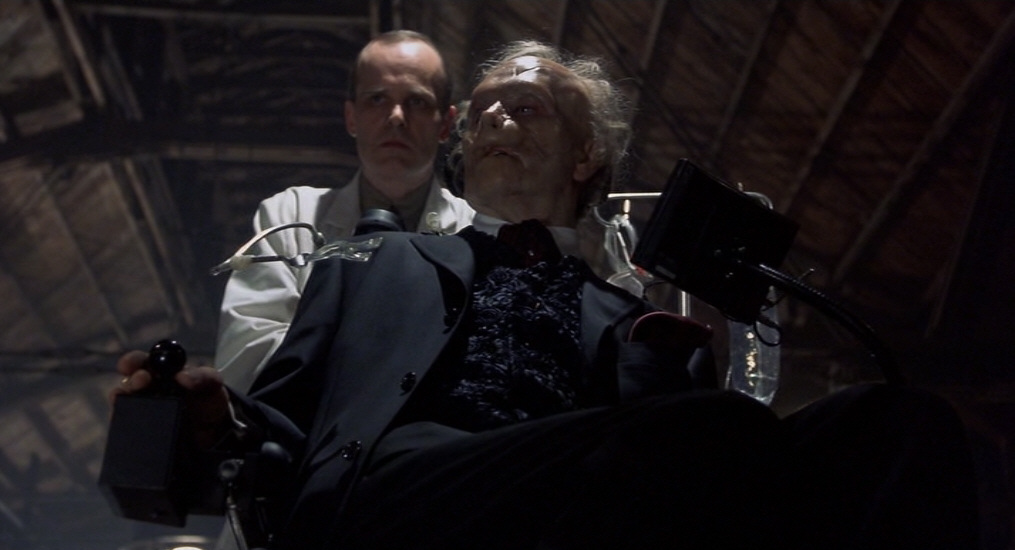
In the sequel to the highly popular and critically acclaimed “Silence of the Lambs,” Gary Oldman plays Mason Verger, the deformed survivor of killer Hannibal Lecter’s violence. Ridley Scott’s “Hannibal” takes place after the events depicted in“Silence of the Lambs,” which ends with Dr. Lecter free from prison after his escape from custody. Hearing Lecter is once again on the loose, his old patient Verger, crippled and deformed from Lecter’s sadistic brand of “therapy,” continues his plans for revenge. Verger is a sick individual and a challenging role for Oldman given the man’s deformities, inability to walk and occasionally masked features. But with his poised stature and icy voice, he becomes a memorable villain and an honest portrayal of someone seeking retribution and little else.
Oldman’s Verger is a specter of a man with a single, all-consuming desire for revenge, and though he pursues one of the FBI’s most wanted fugitives, he has no interest in justice and is willing to do just about anything to realize his goal of making Lecter suffer as he did. As a sadistic killer and a sexual predator, Verger eclipses Dr. Lecter as the primary antagonist of the film and ends up trying to outdo the cannibal’s artful modes of violence by feeding him to a pen of hogs trained to devour the living. After years of preoccupying himself with Lecter’s fate, it is Verger who ultimately falls into the pen, and though he may have deserved such an end, given his own crimes, Oldman garners enough sympathy as a dynamic character to give the death an emotional significance it may have otherwise lacked.
8. The Hire: Beat the Devil (2002)
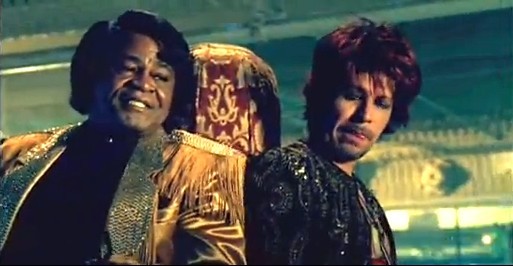
“The Hire” series is a popular anthology of short films by different directors and starring some of the most distinguished celebrities of the day. Sponsored by BMW, the series showcases the company’s top models with ironic branded content, and “Beat the Devil,” starring Gary Oldman as the Prince of Darkness, is one of the most popular to date. In “Beat the Devil,” Oldman gives the villain role a new twist, playing one of the most ancient and iconic villains in human history with grace, humor and personability. In less than ten minutes, he gives a performance that has become an online sensation, and without the sinister demeanor one might expect from the lord of all evil.
Even as the devil himself, Oldman’s character serves as more of a rival than an outright villain, accepting a challenge to race the aging singer James Brown (as himself) on a Vegas strip. The devil’s mannerisms, coldhearted as they may seem, are not necessarily hateful or demonic; they are the behaviors of an old associate with something to offer. Oldman is at his best when he can mix casualness with underlying passions, and as Satan, this combination melds beautifully into darkhearted charisma. He is the devil you know, and as such, he represents both conflict and camaraderie. But when his man loses the race to the king of soul, he lets the beast within him scream.
9. The Book of Eli (2010)
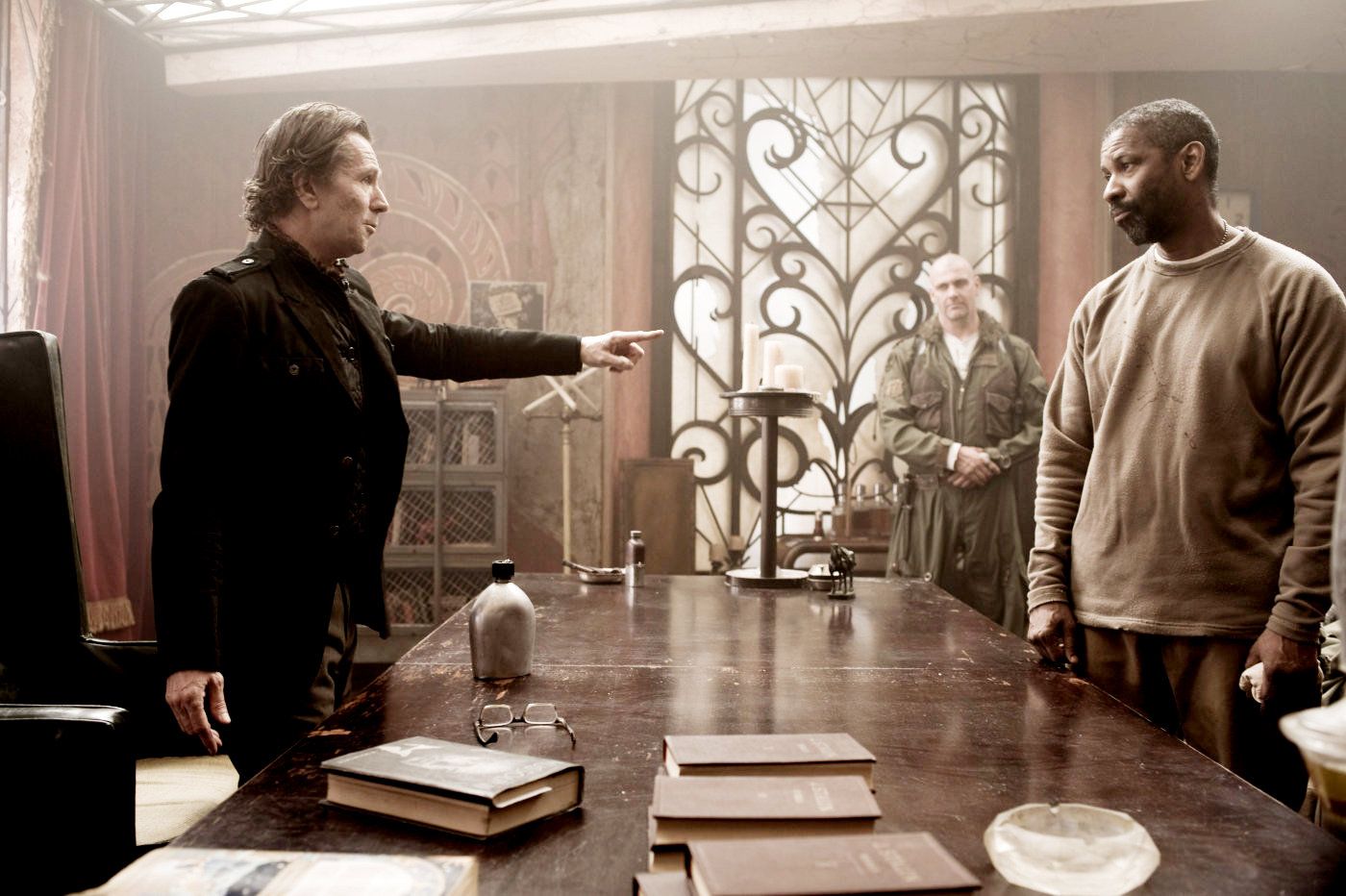
“The Book of Eli,” directed by Albert and Allen Hughes, is described as a post-apocalyptic neo-western action film with an all-star cast. Beside the likes of Denzel Washington, Tom Waits and Michael Gambon, Oldman plays a power-hungry warlord trying to rebuild a semblance of society under his own absolute power. A film that explores the role of religion as a social fabric and a means of social control, “The Book of Eli” uses western tropes to pit good against evil with a questionable outcome, as Oldman’s character, Carnegie, is certainly not the only person capable of using “the good book” to his own devices.
“The Book of Eli” is a film about human values. By linking western images with religious iconography in a post-apocalyptic setting, the story emphasizes the timelessness of the human drama that unfolds. And as Carnegie orders his henchmen to kill the wandering loner Eli (Denzel Washington) for his book, there is a clear sense that his success would not lead to salvation but to further suffering for the people of the township. The book is a symbol of the struggle of good versus evil, and its stories provide a fitting, though ironic, backdrop to the central conflict.
What makes Oldman’s character stand out in this film, aside from his sense of composure and naturalism, is the authenticating style of his expressions. Carnegie is an aging man with a powerful voice and presence, and like those in the evangelical tradition, he uses his words carefully and to great effect. On the rise within a scorched and barren world, the man is already surrounded by the ultimate consequences of human conflict, and yet he thrives on ruthless violence and suppression. Like a lot of Oldman villains, Carnegie’s fate is partly self-imposed, a result of blind ambitions reflected in the book’s braille text that, while useless to him at the time, has already been dictated, typed and printed for posterity.
10. Dawn of the Planet of the Apes (2014)
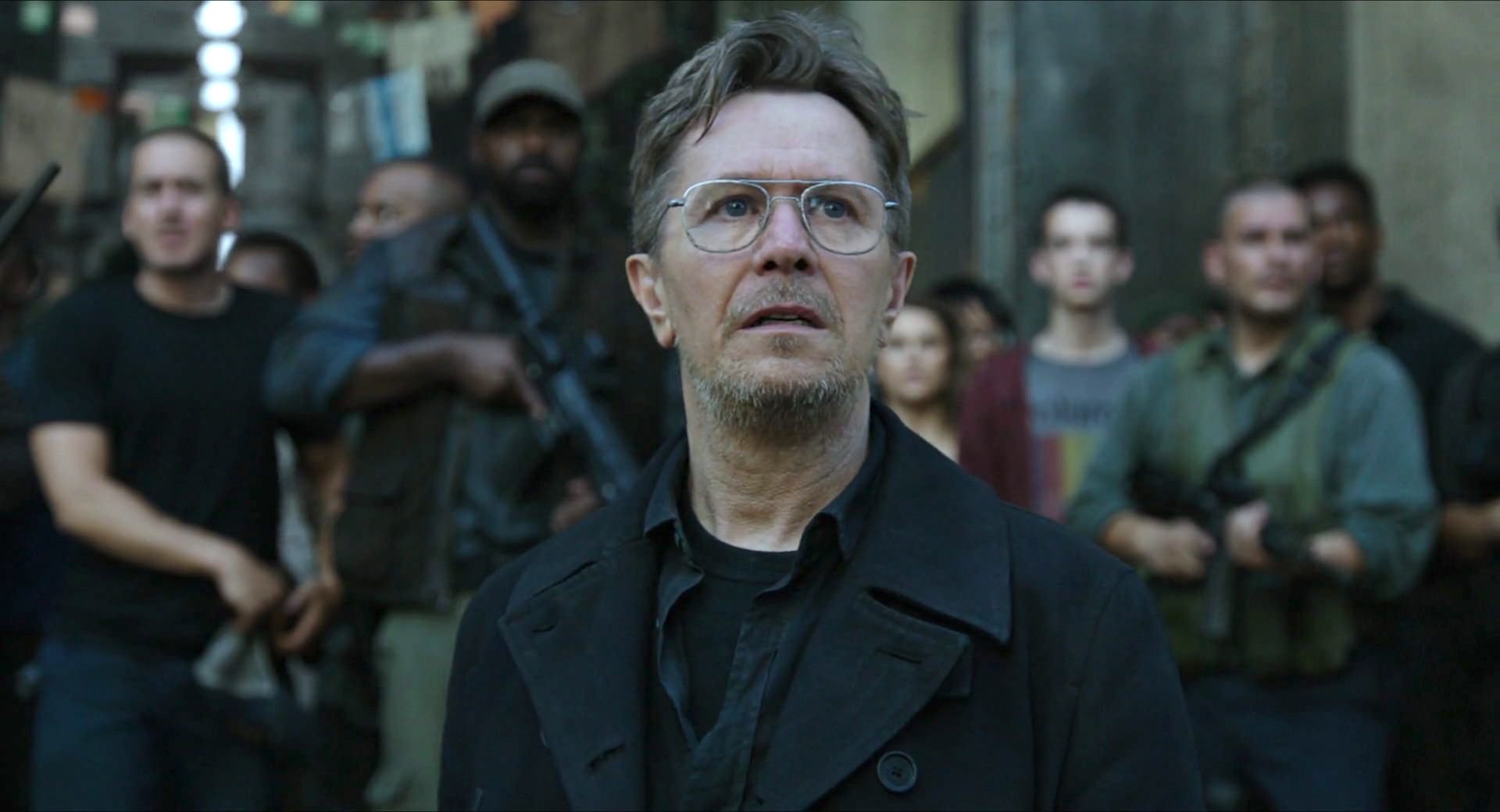
In “Dawn of the Planet of the Apes,” directed by Matt Reeves, Gary Oldman’s character Dreyfus stands as a representative of his species during times of struggle. Dreyfus is no enemy of humanity, and in fact exhibits character traits more aligned with a classic protagonist than an evildoer, but evil is accomplished through him, whether intentional or not. Dreyfus is, in a sense, an anti-villain, a man with a just cause (at least in his eyes) but whose devotions lead to wrongdoing.
This type of character, on the fence of moral ambiguity, is often easily manipulated, and in the case of “Dawn,” that is exactly what happens. Koba (Toby Kebbell), the primary antagonist of the film, is an evil ape who wants to lead his brethren into war with the humans (and with any apes who disagree). Despite the good leader Caesar (Andy Serkis) at the helm, Koba’s manipulations bring out the worst in Dreyfus and his fellow humans with little effort, leading not only to violence but to outright animosity between the species. Once the violence escalates, there is little that Caesar, or his human counterpart Malcolm (Jason Clarke), can do to stop the ensuing war.
“I’m saving the human race,” Dreyfus states before his death, but his final act of destruction only serves to fuel further hatred as he detonates a C-4 explosive in a power plant, hoping to kill the ape leaders and their followers. Not only does Dreyfus fail in his attempt to wipe out the apes, but his actions lead to further violence in his absence, escalating the conflict to the scale of a full world war. Dreyfus is a classic example of the corruptibility of good intentions, and his motives, like those of many antagonists in modern films, are convincingly selfless.
The “Planet of the Apes” franchise is full of ethical dilemmas and social challenges that make coexistence between apes and humans a difficult (if not impossible) goal, and Oldman’s Dreyfus depicts the human side of that equation: a man with the survival and welfare of his people at the forefront of his concerns, but because of his willingness to embrace any means to that end, becomes a threat to all life on the planet.